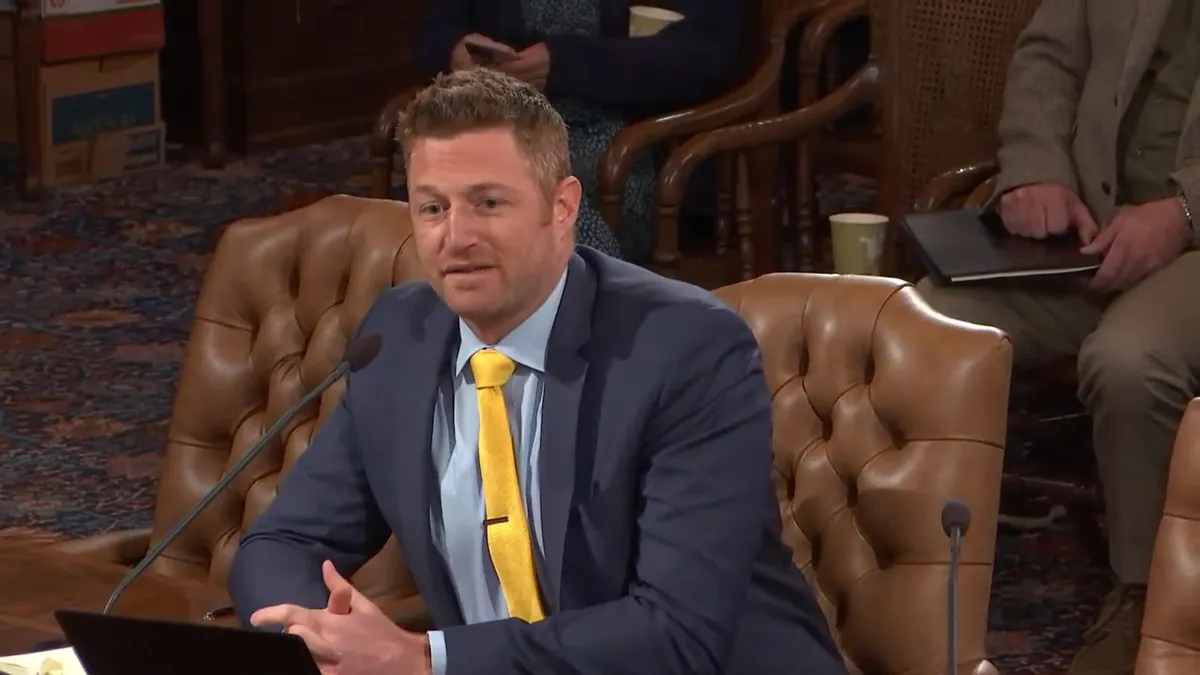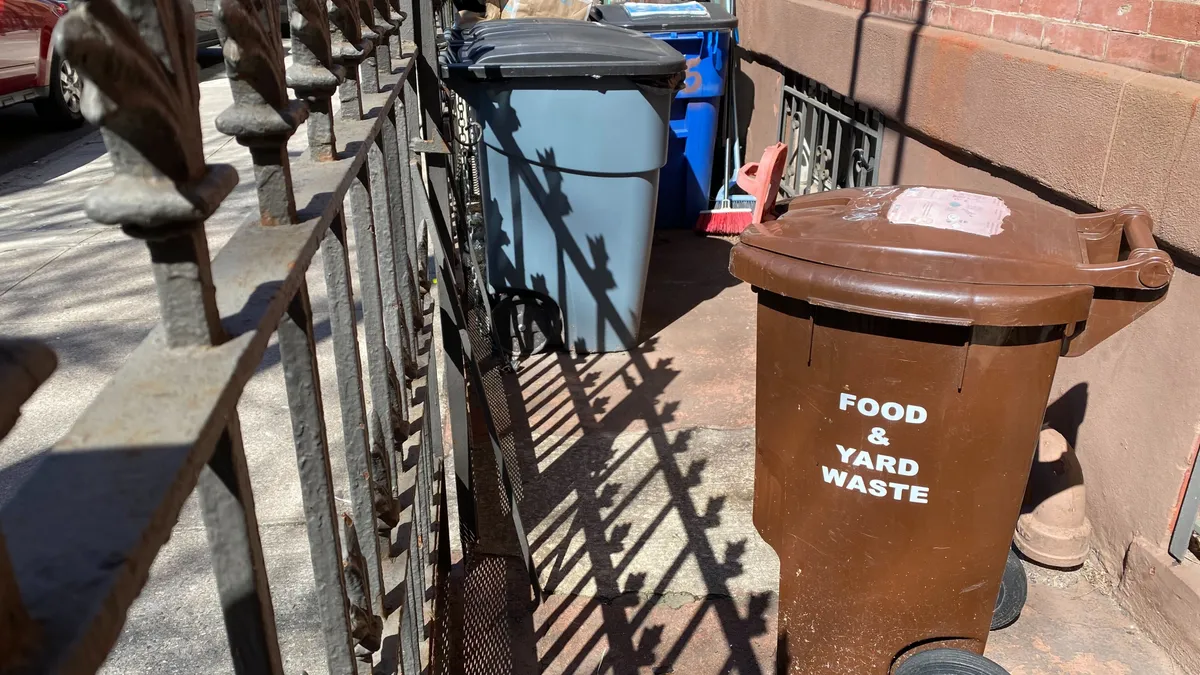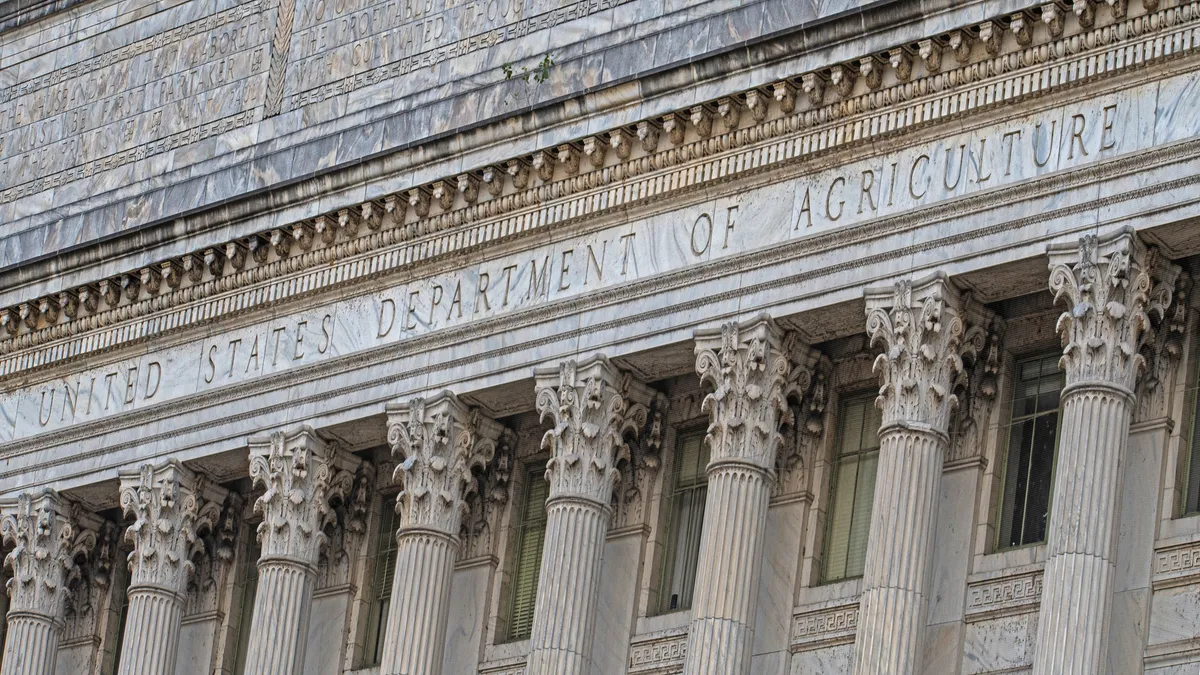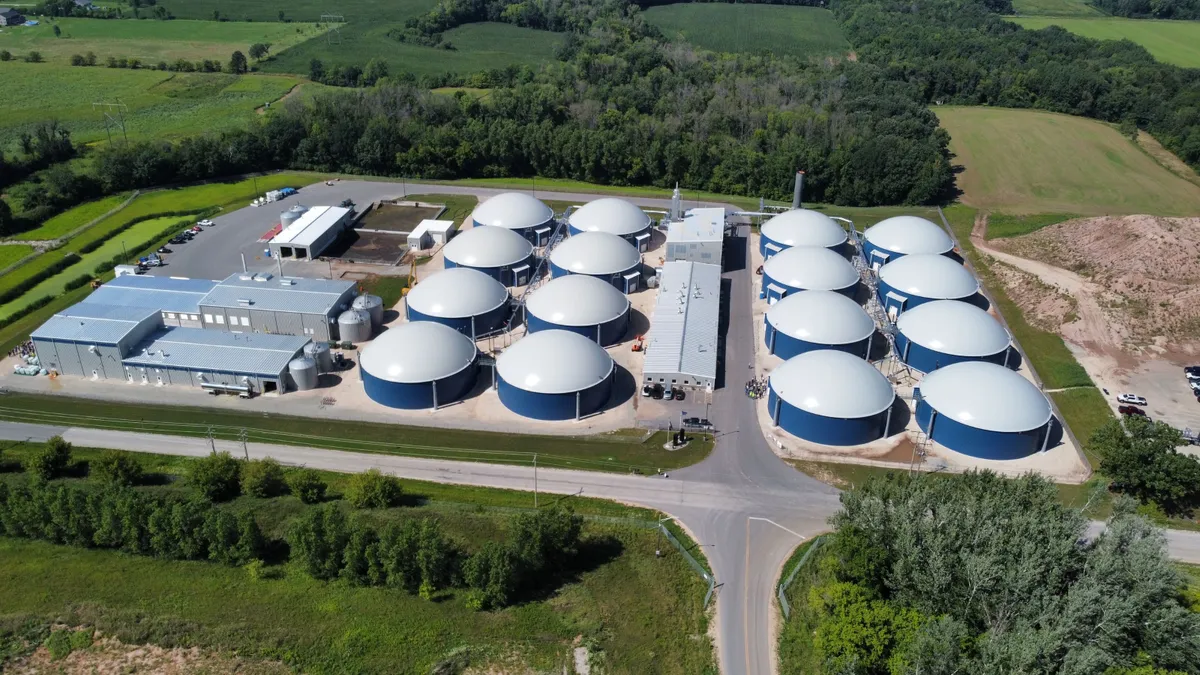The California Air Resources Board voted to amend the Low Carbon Fuel Standard on Nov. 8, updating a sweeping transportation fuels program that incentivizes projects nationwide and seeks to decarbonize the sector.
The amendments package was backed by clean fuels groups whose membership includes waste companies like WM and Republic Services. But public debate was consumed by concerns that the amendments lock in subsidies for combustion fuels and anaerobic digesters on dairy farms at a time when environmentalists are urging a speedy transition to zero-emission vehicles.
During a marathon hearing, the board also greenlit plans to craft a new regulation requiring dairy farms to manage their methane emissions. The regulation is set to go into effect by 2030, six years later than CARB was authorized to begin regulating the potent greenhouse gas on such farms.
Environmental advocates say the board missed an opportunity to address methane emissions at a time when other industries are already grappling with similar restrictions.
"The way to get certain reductions from the industries that are the largest emitters is to regulate them," Bill Magavern, policy director for the Coalition for Clean Air, said. “You can't have all carrots and no sticks.”
California's top five sources of methane emissions
LCFS evolution
CARB first approved the LCFS program in 2009 and implemented it in 2011, and has now passed a major amendments package for the program twice. The board says the program has been a success, reducing the carbon intensity of California's overall fuel mix by nearly 13%, including displacing 70% of petroleum diesel. Biogas industry groups also estimate about 97% of the natural gas used as vehicle fuel in California is renewable natural gas, thanks in part to the program.
After more than a year of debate on this latest amendment package, an array of industry voices urged the board to approve it, including the Coalition for Renewable Natural Gas, Low Carbon Fuels Coalition, utility Southern California Edison and United Steelworkers Local 326, which represents workers at a Phillips 66 plant converted to produce low-carbon diesel. They argue change is needed as the program has suffered from cratering credit prices over the last few years.
The program requires oil and gas companies that provide fossil fuels to Californians to purchase credits from producers of alternative fuels with lower carbon intensities. Those intensities are meant to be determined by the fuel’s potential to contribute to global warming.
Recently, a flood of renewable diesel and strong investment in other kinds of lower-carbon intensity fuels have overwhelmed the LCFS credit market, driving credit prices down and contributing to what industry insiders see as a dampening of investment in cleaner fuels.
The biogas industry’s preferred solution to this issue is to accelerate the obligations of fossil-based fuel producers. CARB adopted this philosophy with the new amendments. It will now require a 30% reduction in carbon intensity of the state’s fuel mix by 2030, rather than the previous 20% requirement. The latest round of amendments also would allow CARB staff to similarly step-up the requirement several years from now if another credit oversupply occurs.
“The program is doing such a good job at reducing carbon emissions, it's clear that the program can do more,” Patrick Serfass, executive director of the American Biogas Council, said in an interview prior to CARB’s vote. “Why would the state not respond to that and try to do more than what was anticipated when the program was first created over a decade ago?”
But some environmental groups have argued the program has become unwieldy since it was first implemented. Over the years, CARB has worked to address an ever-growing range of fuel technologies using the LCFS program. That includes gas refined by dairy digesters, which have received drastically lower — and more lucrative — carbon intensity values than other biogas facilities, such as those at landfills or wastewater treatment plants.
Industry voices that advocate for the current carbon intensity values embedded in the LCFS argue the program evaluates all kinds of fuels and methods of creating them the same way. But environmental groups believe the opposite is true, saying policymakers have put their thumb on the scale in favor of dairy digesters to please agricultural interests and investors.
Aaron Smith, a professor at the University of California, Berkeley, has studied the impact of the LCFS program's avoided methane credit for dairy digesters, the mechanism that allows such facilities to receive low carbon intensity values. Smith found that dairy digester developers achieve a return on investment after about 10 years of receiving an avoided methane credit. Beyond that, the credit likely serves as a windfall for investors without a policy purpose, he wrote.
Those concerns were echoed in comments submitted by Jim Duffy, a retired CARB official who previously led the LCFS program. "No other industry is treated as if their methane pollution is naturally part of the baseline and then lavished with large financial incentives for simply reducing their own pollution," Duffy wrote.
He also noted that the enhanced credits for dairy methane were not part of the original LCFS program adopted in 2009. Rather, they were added in a previous amendment cycle about six years ago.
The biogas industry, for its part, pushes back on Smith’s research and argues the credit is needed for action.
Todd Campbell, vice president of public policy and regulatory affairs for digester developer and natural gas fueler Clean Energy Fuels, said Smith relied on “wildly optimistic assumptions” over credit prices in his calculations. He also argued that the farms most suited for digesters increasingly have already been built out, leaving smaller dairies that will take longer to net developers a return on investment to build.
“The projects are getting more difficult to build and operate. Not the other way around,” Campbell said in an emailed statement.
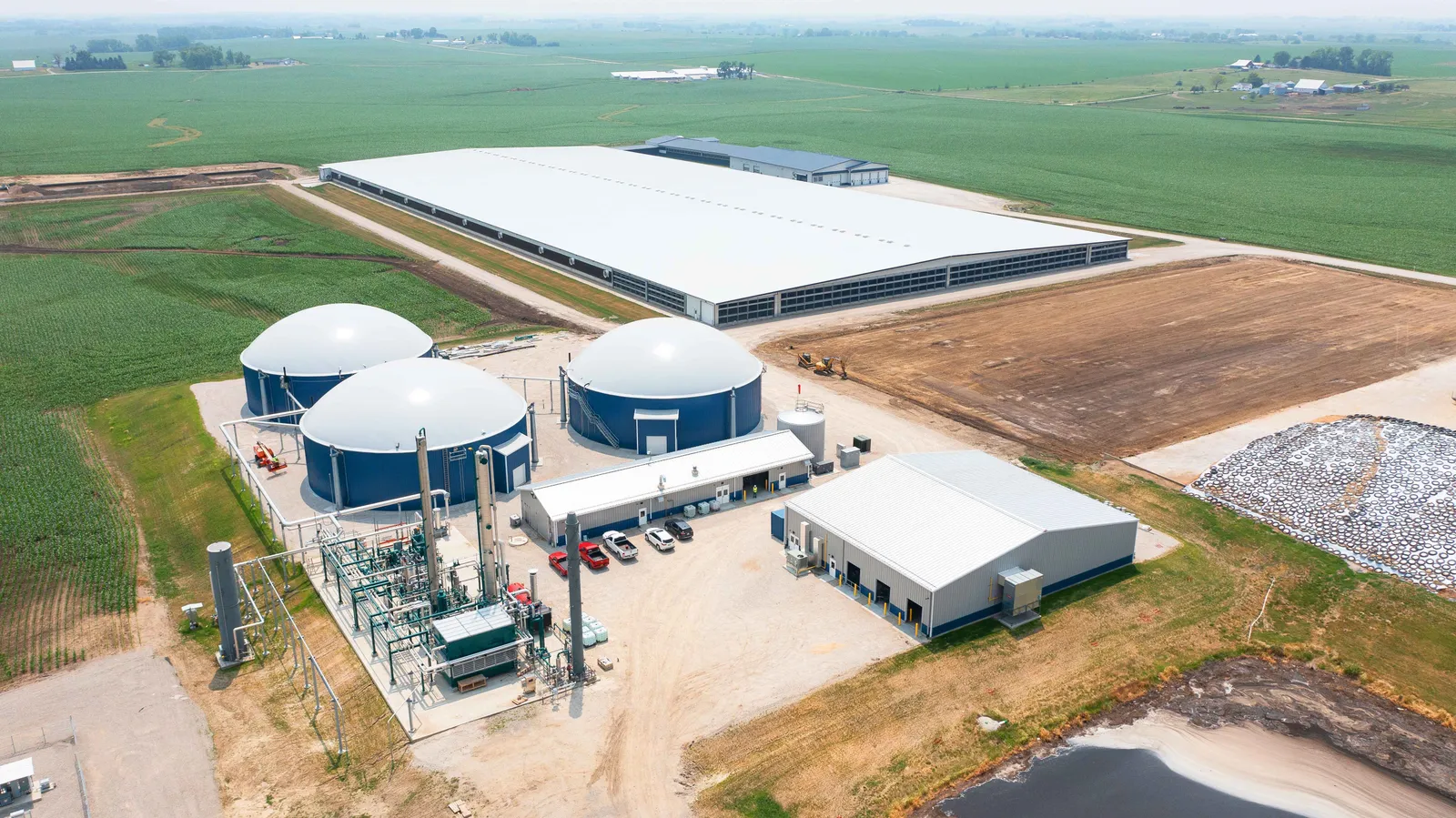
Others have argued that this additional incentive for dairy digesters shifts investment toward dairy farms rather than other equally important sources of methane.
"Gas derived from landfill has a much more moderate carbon intensity score as opposed to dairy gas, even though it's functionally the same technology. You're capturing methane that would have gone into the atmosphere anyway," Jamie Katz, a staff attorney for the Leadership Council for Justice & Accountability, an environmental justice group, said.
"No other industry gets this presumption that their methane is going to be freely vented," she added.
The biogas industry pushes back on this assertion. They say the incentives are necessary to spur dairy farms into action to address their methane emissions, and further argue that any minimization of the credits included in the program over the last several years could spook investors.
“What is really, really disruptive, especially to the investment community, is making quick, immediate changes,” Serfass said. “The success of this program revolves around private industry investment, and if you disrupt private industry investment too much, you kind of kill the program.”
The future of LCFS
While the amendments have been approved, the fight over how CARB regulates methane through the LCFS and other programs will continue.
Prior to the 12-2 vote, several board members acknowledged but did not move to adopt many of the recommendations of CARB's own Environmental Justice Advisory Committee, a relatively new body that weighed in on the LCFS as one of its first official acts. Katz said that was concerning, particularly for the lower-income communities that live near industrial dairy farms in California's San Joaquin Valley.
Katz said that by locking in the avoided methane credit for decades, CARB is also locking in a specific form of managing manure methane that residents living near these facilities have complained about for years. CARB's assurances that projects built over the next several years will continue to receive generous credits could concentrate more digesters in those same communities, Katz argued.
To Sasan Saadat, a former research and policy analyst with Earthjustice, the board could have taken a much simpler approach. Rather than speeding up the carbon intensity scale for the LCFS to spur higher credit prices, the board could have simply rolled back some of the extra crediting it provides to dairy farms and certain other biofuels. Doing so would affect the supply of credits rather than the demand, he argued.
"By relying solely on juicing up demand through increased stringency, CARB is significantly running the risk of increasing the program's overall costs," to drivers of gasoline or diesel-powered vehicles, Saadat said. “I would characterize it as a wealth transfer from California drivers to the investors that invest in these digesters.”
Despite a last-minute attempt from a board member to limit credits for dairy digesters, CARB ultimately chose to lock in up to 30 years of incentives for digesters already built and up to 20 years for digesters built by 2030. Those incentives will be available to facilities despite the board’s simultaneous plan to begin requiring dairy farms to begin controlling their methane through an as-yet-unwritten regulation.
CARB has theoretically been authorized to create a regulation mandating methane emission reductions from livestock manure management operations, including from dairies, since the passage of SB 1383 in 2016. That regulation could have gone into effect on Jan. 1, 2024, but until recently the board has been reluctant to pursue a rule. Now, board members indicated such a regulation would likely be implemented by 2030.
Environmental groups are already preparing to lobby for a strong methane regulation, taking another stab at protecting vulnerable communities amid an energy transition.
“They're not getting rid of us any time soon,” Katz said. “We're going to keep showing up.”
For now, the biofuels investment community views the board’s vote as a green light to industry to ramp up development. California already hosts a third of all dairy digesters in the country, and more in California and elsewhere could soon break ground thanks to continued incentives, according to the American Biogas Council.
In the amendments package, the board also voted to allow a “deliverability” requirement for biogas that would require projects credited by the program to inject their renewable natural gas into a grid that directly connects to the California. Despite urging from some environmental justice advocates that such a provision be implemented sooner, CARB could elect to implement that requirement in 2037 at the earliest.











